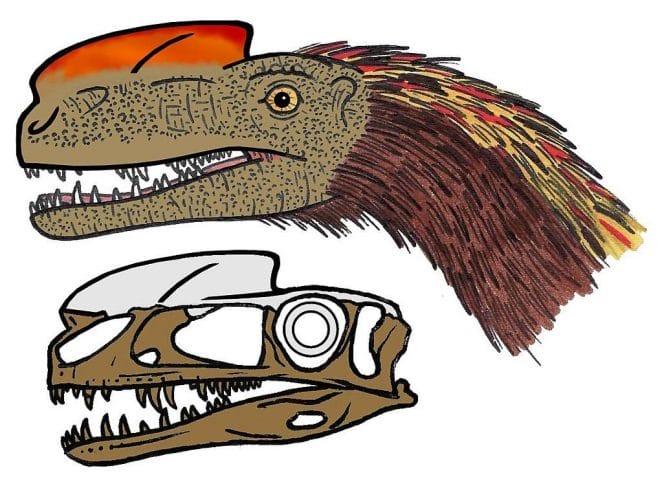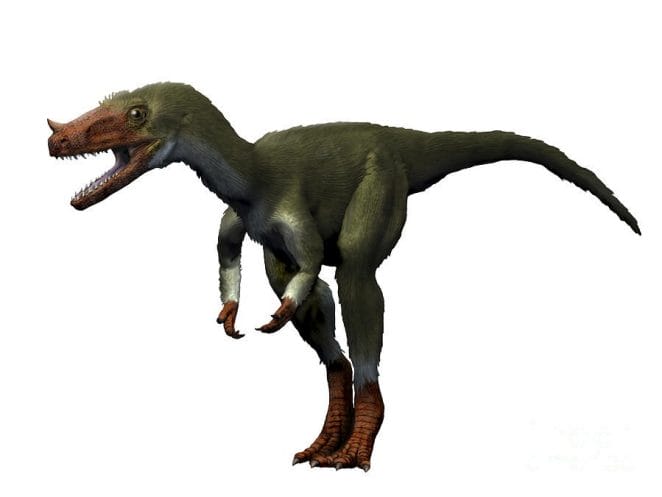Proceratosaurus was a tiny carnivore with a modestly constructed head. It had a little comb at the front of its mouth. This little theropod with a horn on its nose was one of the tyrannosaur group’s earliest members. During the Middle Jurassic, Proceratosaurus lived in what is now England. It was known for having a thin skull with jawbones. Arthur Smith-Woodward first described Proceratosaurus as Megalosaurus bradleyi in 1910. Friedrich von Huene changed the name of this dinosaur to Proceratosaurus bradleyi within the Ceratosauria in 1926.
A recent study has placed Proceratosaurus in the new family Proceratosauridae inside the family Proceratosauridaetyrannosauroidea. A nearly complete Proceratosaurus skull was found in the west of England and is now in the Natural History Museum in London. In 2010, Rauhut and his colleagues wrote a report about how the Proceratosaurus specimen was found to be the oldest known ancestor of tyrannosaurs.

The team, led by German palaeontologist Oliver Rauhut from the Ludwig-Maximilians-Universität München, was able to demonstrate that Proceratosaurus shared several features with its descendant Tyrannosaurus rex, which was roughly 100 million years younger. The skull is one of the best preserved in Europe. Computed tomography revealed remarkable similarities in teeth, jaws, and cranial cavity to Tyrannosaurus, despite Proceratosaurus’s being 100 million years older and much smaller.
The Proceratosaurus’ head was only approximately a fifth of the size of later live representatives of this carnivorous dinosaur family. Proceratosaurus probably weighed roughly 40 kilos, making it a featherweight in comparison to Tyrannosaurus, which could weigh up to eight tonnes. The finding of the Proceratosaurus demonstrates that tyrannosaurs evolved over a lengthy period of time, giving rise to numerous species.
1: Proceratosaurus quick facts:
Name: Proceratosaurus (Greek for “Before Ceratosaurus”); pronounced proh-ker-at-oh-sore-us
When it lived: Middle Jurassic, 169 to 164 million years ago
Type of dinosaur: Small Theropod
Location: United Kingdom
Habitat: Grass plains, swamps, and tundra.
Length/Weight: 3 meters/40kg
Diet: Carnivorous
Distinguishing Characteristics: Enlarged nostrils and a head crest.
Named by: Woodward (1910)
2: How do you pronounce ‘Proceratosaurus’?
The name Proceratosaurus should be pronounced “proh-ker-at-oh-sore-us.”
3: What does the name Proceratosaurus mean?
The Greek name Proceratosaurus translates to “lizard before Ceratosaurus,” while the name bradleyi honours Mr. F Lewis Bradley, who found the first specimen in the early 1900s.
4: What Did Proceratosaurus Look Like?
We know about the small Proceratosaurus from a single piece of a subadult’s skull. It had unusually big nostrils and a crest on the top of its head, both of which were typical of other members of its family, the Proceratosauridae. The front teeth were much bigger than the side teeth.

This species, like other tyrannosaurs like T. rex, had air holes inside its skull. It also had the D-shaped front teeth that all tyrannosaurs have. Proceratosaurus teeth were razor sharp and extremely efficient. It could readily bring down large herbivores with its muscular jaws lined with long sharp teeth.
Sources:Wikipedia





GIPHY App Key not set. Please check settings